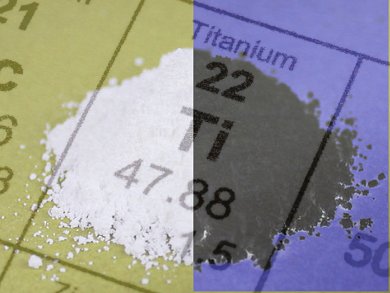The important semiconductor titanium dioxide, titania, has found applications in a wide range of technological innovations. Researchers at the Chinese Academy of Sciences and their colleagues have shown how to improve solar energy conversion using this material, thus improving its potential for the solar-powered sterilization of water and the release of hydrogen from water for fuel cells.
The team have built on work developed half a century ago for the rapid aluminothermic reduction reaction of titania to make aluminium-titanium alloys. However, they have modified this old technique to include a low-temperature (300–500 °C), low-pressure annealing approach to reduce titania with aluminum to generate titania black.
Their initial tests show that this new material absorbs about 65 % of the total solar energy through improved visible and infrared absorption. This is more than twice as efficient than the best previously reported material (about 30 %) and pristine titania (about 5 %). The team explains that the unique core-shell structure and high absorption also significantly improve the photocatalytic properties of the material.
- Visible-light Photocatalytic, Solar Thermal and Photoelectrochemical Properties of Aluminium-reduced Black Titania,
Zhou Wang, Tianquan Lin, Chongyin Yang, Hao Yin, Ping Chen, Dongyun Wan, Fangfang Xu, Fu Qiang Huang, Jianhua Lin, Xiaoming Xie, Mianheng Jiang,
Energy Environ. Sci. 2013.
DOI: 10.1039/C3EE41817K



